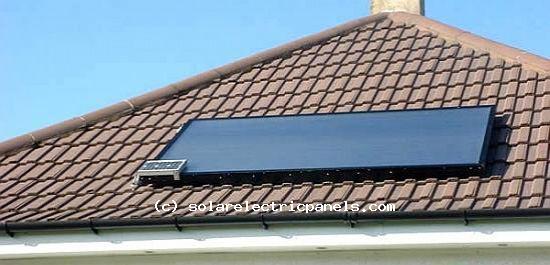Solar Collectors
Solar collectors are categorized in three different types; first one is flat plate collector, second one is integral collector storage systems and the third one is evacuated cube solar collectors. Evacuated cube solar collectors have evacuated tubes each with a liquid filled copper conductor inside. In flat plate collectors before water returning to the cylinder it passes through the whole plate where it is heated.
Evacuated tube collectors are generally more expensive and efficient. In the world the most widely used kind of collector for domestic solar water heating is flat plate collector. These durable and effective collectors are the standard to which all other kinds of collectors are compared. An integral collector storage unit has the solar hot water storage tank as the solar absorber. The tank is painted black or coated with a selective surface and it is mounted in an insulated box with glazing on one side.
The sun is warming the water inside the tank. These types of collectors are mostly used around the world in climates that never experience freezing conditions and they work great. Your roof has to be strong enough to hold tank’s weight because these collectors are very heavy. There are also pool collectors and concentrating collectors.
The best place to store collectors is inside a building. If they are well covered collectors can be stored outside. Collectors can get very hot if they have direct sun and can cause burns when you touch with bare hands especially if they are evacuated tube collectors. They never should be covered with plastic because they will get too hot. You can mount your collector array either on a roof or on a rack on the ground.
Collector tilt is very important because solar collectors will perform at optimum efficiency and maximum output if directly facing the sun. You should choose a permanent mounting angle that will be best for year round performance. For a solar water heater that will be used only during the summer or that will be used year round, a tilt angle will be different. You also should look for shading from trees, chimneys or other buildings.
The best way is having the top of the array as far up the roof as possible. The amount of snow will also reduced behind the collectors with this way. There are brass unions and copper couplers for attaching collectors together. Copper couplers are harder to use than brass unions. Solar water heaters have a life span of 40 years and over.
When the system has been sized correctly it can provide %50-75 of all your hot water requirements throughout the year.
 Solar water heating systems are categorized in two different types; first one is the active one which has circulating pumps and controls another one is passive one which doesn’t. Some form of external power is required for operation in active systems. Active ones are also two types; direct circulation systems and indirect circulation systems.
Solar water heating systems are categorized in two different types; first one is the active one which has circulating pumps and controls another one is passive one which doesn’t. Some form of external power is required for operation in active systems. Active ones are also two types; direct circulation systems and indirect circulation systems.
